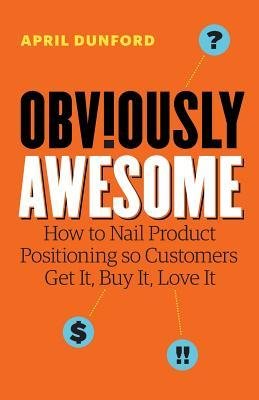BPMA is a community of inspired product professionals who learn from each other and collaboratively explore new ideas. Resources have been thoughtfully curated for every stage of a product professional’s career, enabling members to tap into the right resources at the right time.


In this Dear Product Manager column, a PM shares their frustration with shifting priorities and unclear outcomes. We walk through how to uncover your impact and write a strong performance review in a year that didn’t go as planned.


The AI boom mirrors the dot-com era—explosive hype followed by correction. This article shares lessons for product leaders on grounding innovation in real customer value, aligning teams, and building trust to ensure your AI investments thrive long after the hype fades.


The conversation about artificial intelligence often triggers anxiety -- but the truth is that AI is designed to enhance the effectiveness of product managers, not replace them. AI lacks the soft skills needed to build alignment and trust, strategic judgement, and influence, which are essential for leading a product to success. On the other hand, AI can exponentially improve the output and quality of your work!


Much has been written about what AI can do for you, but it is equally (or perhaps even more) important to understand that there are some things that AI absolutely cannot and should not do for you. Find out more in this article.


Discover why product managers are more essential than ever in the AI era. Learn how AI supports—but doesn’t replace—the strategic, human-centered work of great product teams.


The phrase, “If a tree falls in the forest and nobody is around to hear it, does it make a sound?” has often been used in a philosophical context. But as you’ll see, it will also be an apt analogy for the relationship between Product Management and Marketing.


A senior PM writes in about shifting priorities, unclear direction, and constant rework. We offer practical ways to create clarity, stay focused on outcomes, and lead when the roadmap keeps changing.


In this blog, we explore the similarities and differences between product managers and product marketers through the eyes of a veteran in each role. We share insights about the role, skills, career path and the occasional misunderstanding. We promise that no marketing assets, PRDs or feelings were hurt in the process of making this interview!


When product development isn’t delivering the results you need, it’s often a sign of deeper issues—unclear priorities, stalled delivery, or leadership gaps. This post outlines five common problems that fractional product leaders are brought in to solve, and shows how they bring focus, speed, and better decision-making by embedding with teams and aligning product work to company goals.


More companies are realizing that hiring a full-time product executive isn’t the only—or best—way to get strong product leadership. This post explores why fractional product leadership is gaining traction, how it works, and when it makes sense for both companies and experienced product leaders.


Discover how top companies align their product roadmaps with clear business objectives and strategies to drive measurable results. Learn the importance of defining the "why" behind each initiative, leveraging OKRs for execution, and creating a roadmap that supports strategic goals. Explore best practices for product managers to connect strategy, objectives, and roadmaps effectively.


Human brains are wired for stories — it is how our memory works. Our brains are made for capturing experiences and emotions instead of facts and figures. As a product manager, utilizing storytelling techniques will make your ideas more memorable and resonant with your audience.


No matter where you are in your product development schedule, it’s never too soon to tackle product launch tasks. This blog will help you mitigate risks and increase the likelihood of hitting your desired launch date with the support of the most credible customer references.


I have worked as a Product Marketer for a long time and over the course of my career I’ve had the pleasure of working with many wonderful Product Managers. I’ve found that the role of Product Marketing is a bit nebulous and the definition of it changes from company to company. Oftentimes, the responsibilities of PMs and PMMs are intertwined and overlapping. There are many areas that I’ve seen PMs own in one company and PMMs own in another. For the purposes of this blog I will focus on areas where both PMs and PMMs can contribute including competitive analysis, customer feedback, pricing and sales enablement/training.


With this month’s theme, we're going to go meta and talk about product-managing…yourself. In other words, leveraging your internal customers’ unmet needs to uniquely define your personal brand within your organization (and perhaps industry as well).
.avif)

“It” being the promotion or new role you’re hoping to land soon. It’s an important question to ask and one many who are looking to advance their careers don’t stop to think hard enough about. Sure, you’re confident that you’ve mastered the key skills and you certainly have the right “product” mindset. You’re constantly learning, keeping up with industry trends, and you even have a mentor. But. Have you shifted your perspective? Have you started to think and act as a <insert new title here>? Have you started to think about how you would approach situations you’re facing today as a <insert title here>?


There are several traps that Product leaders face when launching their new product, and if not properly managed, they all lead to slow customer adoption, lower revenues than expected, internal and external friction. Find out some ways to structure your product launch to avoid these pitfalls.


The customer interactions that occur during product discovery are incredibly valuable, not only for product managers, but also to product marketers. These precious interactions can reveal a treasure-trove of customer insights. When it comes to product discovery, it pays for the two product leaders to work together.


There are some simple shifts you can make in the way you do your job, and some changes you can make outside of business hours, to tip odds in your favor. In this blog post we’ll walk you through three suggestions to put your mind at ease in this layoff-happy world.


Product Managers can engage a Product Coach as an essential mentor, akin to a personal trainer for PM careers. Guiding through challenges, integrating advanced technologies, and offering personalized insights, they're not just advisors but game-changers in the realm of product development.


Regardless of your experience or education, there is always more to learn. In this article, we outline a number of different product marketing and management educational options, ranging from podcasts and newsletters to advanced degrees.


Product Discovery applies techniques well suited to AI capabilities such as User Journey Mapping, Predictive Analysis, and Idea Clustering. The product manager must quickly apply these and similar techniques to prioritize ideas that have the best chance of delivering value and continue to do so at a sustainable and improvable pace. If you’re not accelerating your Discovery process already, you’re falling behind your competition. Artificial intelligence will give you the capability to more rapidly evaluate new ideas.


Product leaders must be deliberate about AI in their product strategy, identifying the most critical problems to solve and determining whether AI is the right tool for the job. They must also ensure that the use of AI is aligned with the company's vision, target audience, and risk appetite, and value proposition. In this blog, we explore how you can leverage the power of AI to transform your product strategy and stay ahead in today's rapidly evolving market.


In this blog, we explore the similarities and differences between product managers and product marketers through the eyes of a veteran in each role. We share insights about the role, skills, career path and the occasional misunderstanding. We promise that no marketing assets, PRDs or feelings were hurt in the process of making this interview!


As product managers, it is important not only to excel at managing your products or portfolio – it is also critical to excel at managing yourself. In this post, we will lay out a few tips and ways to think about “productivity-managing” the most precious resource you have: you!


Cross functional initiatives provide a great opportunity to advance your career by showing off your communication and leadership skills to a wide audience. The seven communications skills described here are designed specifically for product managers and product marketers who want to maximize their opportunity. Master these skills and you can enhance your reputation as a strong leader and reliable partner within the organization.


May’s BPMA theme is “Who is your user?”. It is critical to understand who is ultimately using your product and what matters to them in the process of using it. This means that an important area of your expertise is knowing how to identify, capture and share this customer knowledge.


A guide for product managers and marketers looking to begin/improve on their personas. Personas can be a daunting task and while there are lots of guides for how to build personas, there aren’t many with specific examples to use as a jumping-off point or as a layer. In this post, we’ll look at the key types of technology adopters identified in Everett Rogers’s “Diffusion of Innovation” and popularized in Geoffrey Moore’s “Crossing the Chasm”, before exploring how each group represents a “unique physiographic profile - a combination of psychology and demographics that makes its marketing responses different.” As such, they form a great basis for personas, with a few modifications.


As you get your new product or revised pricing ready for introduction, you’ll want to create a set of tools that salespeople can use to respond to price objections without your assistance. Your objective is to minimize the number of price objection inquiries you receive, otherwise, your business will not scale. Also, self-service tools make salespeople more efficient and increase their confidence and competence with customers.


Learn about accessibility, accessibility compliance, and why accessibility is vitally important to product managers.


A good roadmap depends on the right sequence of features. Which features will you deliver first? What features will follow? When should you pivot? Which features can wait or even be dropped from your roadmap?


Product roadmaps can be influenced by many different types of biases — but they don’t have to be. As the owner of the roadmap, your duty as a Product Manager is to be as objective as possible. In this blog, learn some easy-to-implement practices to collect and use customer evidence as data to inform your decisions.


By actively seeking out and considering stakeholders’ input, organizations can make informed decisions that are better aligned with stakeholders’ needs and priorities. Decision-driven stakeholder management designedly connects stakeholders with evidence, facts and data to assist in key product management conclusions.


In searching for product managers, companies often put much emphasis on technical skills. Yes, they are needed to some extent, but simply having technical skill not define a great product manager. Find out the top 10 characteristics of great product managers in this post.


Regardless of what holiday(s) you celebrate, November and December are generally a time of appreciation and often gift-giving for loved ones. This year, we polled the BPMA members for their favorite Product Management and Product Marketing gifts. We’ve compiled their responses below, along with a few favorites of our own. NOTE: We have no interests or commercial connections with any of the below products – whether you buy them (and from where) are entirely up to you. We’ve linked to Amazon for simplicity, but are using no referral codes and have nothing to gain from it. Enjoy and happy holidays! Without further ado…


A Product Manager often sails in uncharted waters. Like a ship captain without a map, they must rely on observations from instruments to avoid dangers and reach the destination safely. This article will introduce “The Pirate Framework”, an aid to Product Managers in organizing key observations that support decisions to stay on course, or to pivot to a new tack.


Reading the economic news can be unsettling these days: high interest rates; inflation; layoffs. It sends a shiver down your spine! Wouldn’t it be nice to hear positive news now that the global pandemic is under control, and we can get back to some level of normalcy? The answer is that we are in a transitional stage in the economy, where there are plenty of positive factors simultaneously being met with some negative factors. Historically, we have experienced higher unemployment and recessionary pressures that parallel high inflation rates. So, as a Product professional – what does this all mean for you and your career?


In this blog, I summarize BPMA's August 2022 event, which was about Embracing Creativity in Product Development. This is an interesting and important topic for people who are new to product development., as this blog discusses what it means to be creative and provides some examples. .This event’s guest speaker was Kristin McGillicuddy. She is the product marketer at KVH Industries Inc, a market leader in mobile connectivity. She also teaches at Stonehill College.


Many books have been written about product positioning, such as “Positioning: The Battle for Your Mind” by Trout and Reis. “Positioning” is a common term in the product manager or marketer’s vocabulary,and refers to the process of defining how a product addresses and wins in a market. However, April Dunford wrote her 2019 book, “Obviously Awesome” to address a problem that she still sees in product positioning: there is not much guidance available on how to actually do it.


As a product manager; you sometimes have to make decisions with limited data. The most accurate method to evaluate your conversion funnel is to get data directly from your customers’ behavior. This article introduces a tool that will help you make better decisions with customer data.A/B Testing (or split testing) is an approach to decision making that tests two or more options on a limited audience while collecting data to prove which produces better results. This data drives the product manager’s decision to pick the best approach for broader application.


We are first-time parents and our son is now a toddler. As we transitioned out of ‘baby bucket’ age, a topic that consumed many of our sleep-deprived-yet-somehow-conscious hours was research into convertible car seats. We reviewed NHTSA reviews and ratings (Pro Tip: All car seats that you see on the market have met federal child restraint safety standards are considered equally safe), booster seat conversion options, cup holder accessories, padding and print options and more in an attempt to find the ‘right’ seats. We finally decided on a seat, purchased and installed it, and everything was fine. Until we realized that one of the most painful features (or lack thereof) was one nobody had told us we’d care about.


This is a short summary of the talk on how to excel as a data PM with Michael Barros, head of product at Surgo Ventures, an early stage company using AI to solve health and social problems with precision.


Steve Jobs, world-famous innovator and CEO of Apple once said that you should never give customers what they ask for:“Some people say ‘give the customers what they want’, but that's not my approach. Our job is to figure out what they're going to want before they do. I think Henry Ford once said, 'If I'd ask customers what they wanted, they would've told me a faster horse.' People don't know what they want until you show it to them.”


“If you know the enemy and know yourself, you need not fear the result of a hundred battles.” ~ Lao Tzu. Building a product is a continuous effort and is a constant battle. In order to win and compete well in the market, product managers need to know their products very well as well as their competitors’ products. To do that, product managers need to conduct competitive analysis. Competitive research or analysis is doing market research on your competitors’ products and measuring those against your own product.


Previously, on ProductHub Blog… In the last post, we covered the many ways and situations in which storytelling can be useful to you as a product manager, both inside and outside of your company. We also described the importance of carefully identifying your ‘big idea’ as well as your characters. After you’ve chosen your characters, it’s time to define the story arc itself.


Human brains are wired for stories. We are very good at remembering events and narratives – much better than, for example, raw facts without context. Consider the last presentation you saw. Was it just a listing of facts and figures? How many of them can you remember? Now think of a Disney movie you haven’t seen for 15 years. Why is it that you can remember the subtle details of that long-ago movie so clearly, but not the details of the presentation you saw last week? It has to do with how our memory works and our brain’s preference for capturing experiences and emotions instead of facts and figures. And though the scientific details of this are beyond the scope of this article, suffice it to say – utilizing storytelling techniques will make your ideas more memorable.


April 8, 2022 was a special day, possibly for many reasons, but certainly for one reason in particular. That was the date that BPMA presented its 108th Product Executive Forum on the ninth anniversary of the founding of the PEF. BPMA began the PEF program in April of 2013 and the program has been going strong ever since, offering important topics, informative presentations, and engaging conversation.


Artificial intelligence (AI) is the ability of machines and robots to do tasks just like humans. It is artificial since it is man made as opposed to human intelligence, which is natural. These products have the capability to do work autonomously without human intervention. That can be a good thing because humans can then just rely on these machines to do mundane tasks so that they can do other things like spending more time with their families. However, with great power comes great responsibility. Having machines with artificial intelligence has its ups and downs.AI presents two major areas of ethical concern for society: privacy and surveillance as well as bias and discrimination.


Climbing up the career ladder is a years-long process, and everyone’s path is different. Finding opportunities within the organization where you work can sometimes be challenging as some organizations have established career ladders - while some don’t have clear criteria developed at all. This can make it very difficult to identify opportunities to showcase one’s potential to become a leader. Boston Product Management Association (BPMA) offers a number of ways for product managers to engage in activities that can make a big, positive impact on their careers, and position them well within their organization to make the jump to more senior positions.


BPMA hosts an event every month. For the month of February, BPMA invited three panelists to discuss the current state of the product management job market. The conversation mainly focused on three topics - finding the right opportunities, interview preparation, and overall job market demand and competition. The three panelists were Kiyan Rajabi, Larry Kahn, and Amelia Rogers.


One of the more interesting BPMA panel discussions last year focused on product analytics tools, process, and methodology. Panelists included Greg Achenbach, the VP Product at PredictAP, Joshua Herzig-Marx who is Head of Product at Brigit, and Douglyss Giuliana, the Director of Product at Alignable. The panel followed the typical format in which the main presentation consisted of host Chris Peterson, BPMA Co-Director of Programming, asking questions and the panelists offering their considered opinions. Let me take a Q&A style approach to summarize the key insights for those who couldn’t attend.


Imagine you’re in a giant board room. Twenty people in dark suits sit around a mahogany table. You are up at the front talking about your newest product that’s about to be released. The CEO from the far end of the conference table says “I think we should add a Super Cool Feature before we release this.” Everyone at the table nods in agreement because the executives always agree with the CEO. You’re thinking to yourself “Super Cool Feature would not only delay the release, but it’s also a terrible idea.” Everyone is waiting for your response. What do you say?


Cryptocurrency and blockchain are newer technologies that are increasingly finding their way into products. In this blog post, I will talk about what a product manager needs to know in order to manage a product that uses cryptocurrency and blockchain technologies. What do you need to know as a product manager working on cryptocurrency and blockchain?


2021 has been a year to get through with hopes of better times, as well as an opportunity for change. What will 2022 bring? More of the same or the unexpected? Product management is an ever-evolving field, and in this post we will consider some areas in which there may well be an opportunity to advance the practice and discipline of product management in the coming year.


Earlier this year, BPMA conducted research into the state of, and impact of diversity, equity and inclusion on product teams. This is the first in a short series of blog posts on Diversity, Equity & Inclusion (DEI) in Product. First, we will explore the impact of DEI on the workplace overall.


As a product manager, joining a new organization is always challenging, regardless of how much experience you have. You are the product expert, and are expected to know everything about the user, market, the product. But on your first day, you are probably realizing that you know nothing about the product, or the organization you’ve just joined.


BPMA, Boston’s leading community for product managers and product marketers, today announced the results of its Diversity, Equity, and Inclusion (DE&I), survey. The landmark BPMA DE&I Study is one of the first ever to examine the state and impact of Diversity, Equity and Inclusion on product teams and the products they create. For those organizations seeking to derive the benefits of DE&I, this survey is a must read.


Being a product manager is a rewarding career. People who want to enter the field can come from different backgrounds, from sales to customer service to engineers. Are you working full time but want to switch careers, wondering how you become a product manager? Are you fresh out of college and looking to get your foot in the door? Do you wonder how to find an opportunity or how to get your first PM job? Here are some helpful ideas on how to get your career in product management started.


Are you looking for a product management or product marketing job? Are you a practicing product manager or product marketing manager with a desire to expand the scope of your responsibilities? Or perhaps, you have just assumed a senior management role and could use some help getting over the initial challenge? The Boston Product Management Association (BPMA) can help!


Much like an enthusiastic and determined hiker goes about clearing a usable trail through a forest, a skilled and insightful technical team member can size up the day-to-day business operations at their growing organization and seize opportunities to suggest product and other improvements that ultimately land them in an influential product management role.


For our June 2021 monthly, BPMA hosted an event focused on the relationship between product management and user experience. The event was led by Tim Fu, VP of Product at Valor Performance, and KD Singh Arneja, Senior Director of User Experience at Clarivate. Tim and KD discussed the importance of creating and nurturing a strong working relationship between product managers and user experience team members as we all working together to create products that solve user problems.


Product management roles across different industries, companies size, customer base etc. can be very different and yet very similar. Understanding the nuances of these differences and similarities can go a long way in a product manager’s (PM) career. However, this blog is going to be squarely focused on the B2B vis-a-vis B2C products.


Product management is a constant juggle. Refining the backlog, reviewing designs, conducting user research, making presentations, analyzing the data, and the list goes on. Throughout it all are the constant questions - How’s the project coming? When will we get to see the latest demo? What A/B tests are running? Is the forecast updated?


I love this phrase; I love what it represents. If you are aware of it, you can plan for it. The curse of knowledge (CoK) is a major source of business confusion, missed requirements, misunderstandings, and lost opportunities. It affects all personas within a business or at a customer site. Specifically for product management and marketing teams, it will result in products and features to not hit the mark for customers and missed customer expectations. For the April 2021 BPMA Product Executive Forum (PEF), the group discussed the curse of knowledge, how it manifests, and how to work around it.


What your product is worth – its value – and what you realize through pricing can vary wildly. Closing that gap and selling based on value requires several tools and skills as the customer goes through their buying journey. For the March 2021 BPMA Product Executive Forum (PEF), the group tackled these issues sharing tactics that work and those that fall short.


As a product manager, you own the roadmap for your product. For those who have roadmapped know that it’s as much an art as it is a science. You don’t have to be a superhuman to master roadmapping skills. Just be a good listener. Good ideas can come from anyone who knows, has used or explored your product - customers, colleagues, sales, marketing, executives, engineering, customer support or even an employee in your company.


The race is on to reach net-zero carbon emissions benchmarks by 2030 or 2050. In recognition of Earth Day, BPMA is clicking the pause button on tech products to spend a moment recognizing the role product managers in General Motors’ electric vehicle division have played in positioning the automobile maker to become a respectable player in this vital market.


On March 24, 2021, BPMA hosted a panel case study discussion with the ezCater product team (Erin DeCesare, ezCater CTO; Nathan Ciruolo. Director of Product Management, Fulfillment; and Sean Kleeman, Delivery Enablement Success Manager). The forum was a great opportunity to hear about ezCater, and work in small groups to solve a problem the company is focusing on right now.


Many companies observe that their pricing process could use some improvement. This need for improvement is frequently attributed to a variety of factors, including lack of strategic pricing expertise and lack of clear ownership of the pricing function. A recent Product Executive Forum (PEF) brought together a diverse group of product leaders to explore this topic.